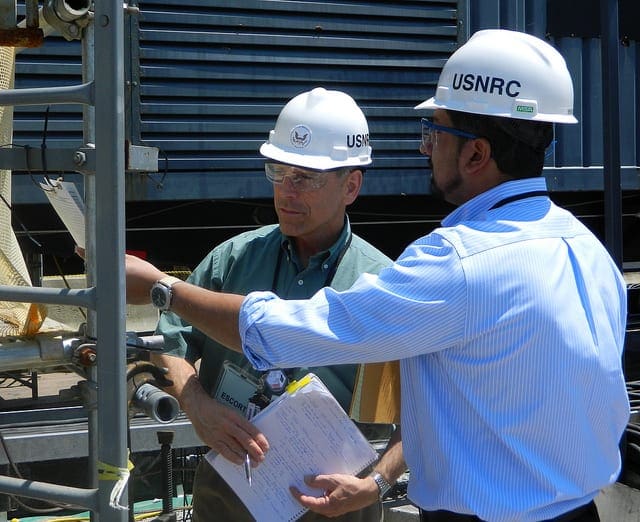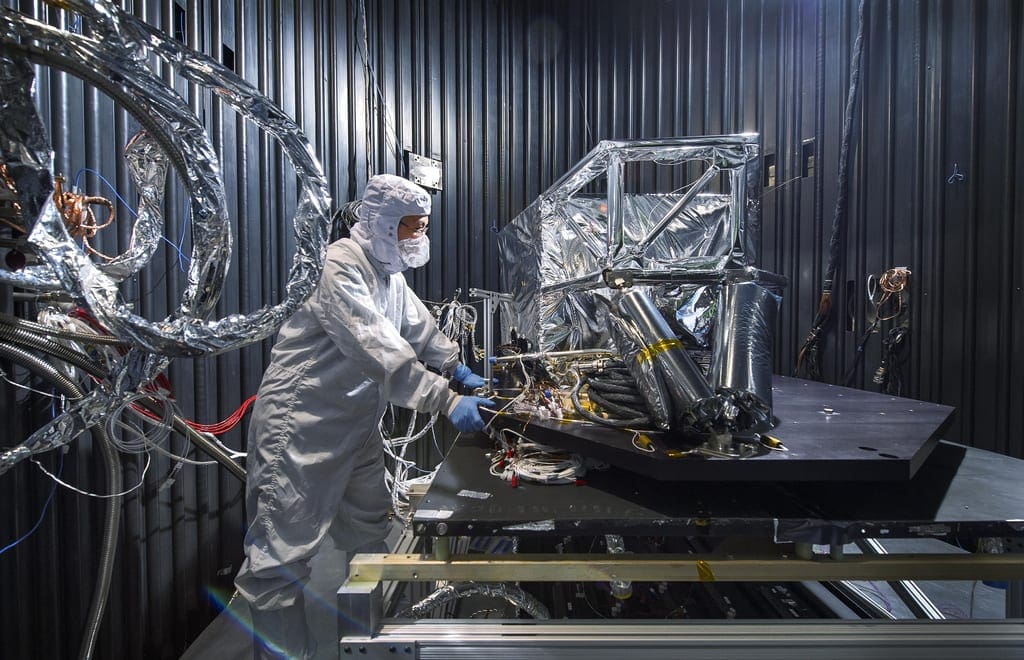If You Knew Which Algorithm or Algorithm Configuration To Use,
You Would Not Need To Use Machine Learning
There is no best machine learning algorithm or algorithm parameters.
I want to cure you of this type of silver bullet mindset.
I see these questions a lot, even daily:
- Which is the best machine learning algorithm?
- What is the mapping between machine learning algorithms and problems?
- What are the best parameters for a machine learning algorithm?
There is a pattern to these questions.
You generally do not and cannot know the answers to these questions beforehand. You must discover it through empirical study.
There are some broad brush heuristics to answer these questions, but even these can trip you up if you are looking to get the most from an algorithm or a problem.
In this post, I want to encourage you to break free of this mindset and take hold of a data-driven approach that is going to change they way you approach machine learning.

Data-driven approach to machine learning
Photo by James Cullen, some rights reserved
Best Machine Learning Algorithm
Some algorithms have more “power” than others. They are non-parametric or highly flexible and adaptive, or highly self-tuning or all of the above.
Typically this power comes at a cost of difficulty to implement, the need for very large datasets, limited scalability, or a large number of coefficients that may result in over-fitting.
With bigger datasets, there has been a renewed interest in simpler methods that scale and perform well.
Which is the best algorithm, the algorithm that you should always try and spend the most time learning?
I could throw out some names, but the smartest answer is “none” and “all“.
No Best Machine Learning Algorithm
You cannot know a priori which algorithm will be best suited for your problem.
Read the above line again. Meditate on it.
Meditate on it.
- You can apply your favorite algorithm.
- You can apply the algorithm recommended in a book or paper.
- You can apply the algorithm that is winning the most Kaggle competitions right now.
- You can apply the algorithm that works best with your test rig, infrastructure, database, or whatever.
These are biases.
They are short-cuts in thinking that save time. Some may, in fact, be very useful short-cuts, but which ones?
By definition, biases will limit the solutions that you can achieve, the accuracy you can achieve, and ultimately the impact that you can have.
Mapping of Algorithms to Problems
There are general classes of problems, say supervised problems like classification and regression and unsupervised problems like manifold learning and clustering.
There are more specific instances of these problems in sub-fields of machine learning like Computer Vision, Natural Language Processing and Speech Processing. We can also go the other way, more abstract and consider all of these problems as instances of function approximation and function optimization.
You can map algorithms to classes of problems, for example, there are algorithms that can handle supervised regression problems and supervised classification problems, and both types of problems.
You can also construct catalogs of algorithms, and that may be useful to inspire you as to which algorithms to try.
You can race algorithms on a problem and report the results. Sometimes this is called a bake-off and is popular in some conference proceedings for presenting new algorithms.
Limited Transferability of Algorithm Results
Generally, racing algorithms is anti-intellectual. It is rarely scientifically rigorous (apples to apples).
A key problem with racing algorithms is that you cannot easily transfer the findings from one problem to another. If you believe this statement is true, then reading about algorithm races in papers and blogs does not inform you about which algorithm to try on your problem.
If algorithm A kills algorithm B on Problem X, what does that tell you about algorithm A and B on problem Y? You have to work to relate problems X and Y. Do they have the same or similar properties (attributes, attribute distributions, functional form) that are exploited by the algorithms under study? That’s some hard work.
We do not have fine-grained understandings of when one machine learning algorithm works better than another.
Best Algorithm Parameters
Machine learning algorithms are parametrized so that you can tailor their behavior and results to your problem.
The problem is that “how” to do the tailoring is rarely (if ever) explained. Often, it is poorly understood, even by the algorithm developers themselves.
Generally, machine learning algorithms with stochastic elements are complex systems and must be studied as such. The first order – what effect does the parameter have on the complex system may be described. If so, you may have available some heuristics on how to configure the algorithm as a system.
It is the second order, what effect will it have on your results which is not known. Sometimes you can talk in generalities about the parameters’ effects on the algorithm as a system and how this translates to classes of problem, often not.
No Best Algorithm Parameters
New sets of algorithm configurations are essentially new instances of algorithms for you to challenge your problem (albeit, relatively constrained or similar in the results they can achieve).
You cannot know the best algorithm parameters for your problem a priori.
- You can use the parameters used in the seminal paper.
- You can use the parameters in a book.
- You can use the parameters listed in a “how I did it” kaggle post.
Good rules of thumb. Right? Maybe, maybe not.
Data-Driven Approach
We do not need to fall into a heap of despair. We become scientists.
You have biases that can short-cut decisions for algorithm selection and algorithm parameter selection. They can serve you well in many cases, we think.
I want you to challenge this, to consider abandoning heuristics and best practices and take on a data-driven approach to algorithm selection.
Rather than picking your favorite algorithm, try 10 or 20 algorithms.
Double down on those that show signs of being better in performance, robustness, speed or whatever concerns interest you most.
Rather than picking the common parameters, grid search tens, hundreds or thousands of combinations of parameters.
Become the objective scientist, leave behind anecdotes and study the intersection of complex learning systems and data observations from your problem domain.
Data-Driven Approach in Action
This is a powerful approach that requires less up-front knowledge, but a lot more back-end computation and experimentation.
As such, you will very likely be required to work with a smaller sample of your dataset so that you can get results quickly. You will want a test harness that you can have complete faith in.
Side note: how can you have complete trust in your test harness?
You develop trust by selecting the test options in a data-driven manner that gives you objective confidence that your chosen configuration is reliable. The type of estimation method (split, boosting, k-fold cross validation, etc.) and it’s configuration (size of k, etc.).
Fast Robust Results
You get good results, fast.
If random forest is your favorite algorithm, you could spend days or weeks trying in vain to get the most from the algorithm on your problem, which may not be suited to the method in the first place. With a data-driven methodology, you can discount (relative) poor performers early. You can fail fast.
It takes discipline to not fall back on biases and favorite algorithms and configurations. It’s hard work to get good and robust results.
The result is that you no longer care about algorithm hype, it’s just another method to include in your spot checking suite. You no longer fret over whether you’re missing out by not using algorithm X or Y or configuration A or B (fear of loss), you throw them in the mix.
Leverage Automation
The data-driven approach is a problem of search. You can leverage automation.
You can write re-usable scripts to search the for the most reliable test harness for your problem before you begin. No more ad hoc guessing.
You can write a reusable script to try automatically 10, 20, 100 algorithms across a variety of libraries and implementations. No more favorite algorithms or libraries.
The line between different algorithms is gone. A new parameter configuration is a new algorithm. You can write re-usable scripts to grid or random search each algorithm to truly sample its capability.
Add feature engineering on the front so that each “view” on the data is a new problem for algorithms to be challenged against. Bolt-on ensembles at the end to combine some or all results (meta-algorithms).
I have been down this rabbit hole. It’s a powerful mindset and it gets robust results.
Summary
In this post, we have looked at the common heuristic and best-practice approach to algorithm and algorithm parameter selection.
We have considered that this approach leads to limitations in our thinking. We yearn for silver bullet general purpose best algorithms and best algorithm configurations, when no such things exist.
- There is no best general purpose machine learning algorithm.
- There are no best general purpose machine learning algorithm parameters.
- The transferability of capability for an algorithm from one problem to another is questionable.
The solution is to become the scientist and to study algorithms on our problems.
We must take a data-driven problem, to spot check algorithms, to grid search algorithm parameters and to quickly find methods that yield good results, reliably and fast.







Hi Dr Jason,
This is one of the most important blogs I have come across on racing algorithms. I have been also stuck in this mindset that I could move no further in using machine learning algorithms thinking that what improvement could I make when others have tried on that particular algorithm.
This have given me confidence to move forward. This was indeed useful for me.
Thanks once again.
I had been using the terms data-driven and machine learning interchangeably. I thought one can’t exist without the other and they must imply the same. However, after reading on internet and your blog I understand that machine learning is the study and development of algorithms that can learn from data and make predictions.
However, I want to clarify if there are non-data-driven approaches to machine learning. What would that mean?
Hi Ravi,
Non-data-driven approaches where you cross check the robustness like Functionality testing, Compatibility testing ,End to End testing and Performance testing.
Hope given information help you.
Great article. This is why an “agile” approach to Data Science is needed across industries. The only way to make that happen is to be very “package aware” so that you can test many algorithms in different environments until the world tell you what does and doesn’t work. Every process in the universe happens in this fashion, and there is no reason to think that Data Science is any different. Evolution, rapid failure, iteration…its all the same. Humans cannot directly see a solution that exists in high-dimensional space. This requires experimentation from multiple angles, along with the domain expertise to validate the results.
Hi,
Really nice.! I am new to Data-Driven Approach and would like to do algorithm or model testing. I am using R lang able to find the histrogram and frequecy of each attributes/features. I would like to reproduce or generate the cross validation data purpose.
Thanks,
Hi Dr Jason,
I am new to Data-Driven Approach and would like to do algorithm or model testing.
I would like to know the Test Approach for XGboost and Random forest data-driven and machine learning Algorithms testing. In my 14+ years of experience work with product and application Whitebox testing , DB Migration and analytics testing,Automation testing. I did test all type of testing in whole SDLC lifecycle.
I will be interested in knowing test steps and test approach for data-driven and machine learning Algorithms testing. Mainly searching for Decision tree,XGboost and Random forest Algorithms.
Thanks,
See this post for a robust tutorial:
https://machinelearningmastery.com/evaluate-skill-deep-learning-models/
Thanks for clarifying the concept.It’s so helpful.
You’re welcome.
Hi Jason
Great work that what you have done.
My question is how the prediction is done by using some sports that are using brands…
I recommend using this process when working through a new predictive modeling problem:
https://machinelearningmastery.com/start-here/#process
sorry by using some sports images
If you are using images, I would recommend testing methods like CNNs.
Thanks Jason. Good info. It’s an eye-opener for me.
I’m glad to hear that.
Love it,good insight!!!
Thanks.
How can i separate or get ground truth for the iris dataset using the same 150 instances
Ground truth is provided in the dataset in the final column, the output variable/column.
Thank you sir,
Is there any post of yours describing specifically how to use Weka for multiclass problems. I want to train using csv files and use the information to test on other samples.
Is it possible if I need top n matches instead of a single result?
Yes, see here:
https://machinelearningmastery.com/multi-class-classification-tutorial-weka/
Nice and useful blog. I am wondering is the theory driven computer vision system the same as model driven system?
The methods may be the same, the motivation for selecting the method will be different.
Thanks for your amazing article and clear explanation. I am a big fan of your articles on this website and I am currently reading your book!
In your article, you mention the following “create a reusable script to try automatically 10, 20, 100 algorithms across a variety of libraries and implementations”.
I was wondering whether you might have such a script or whether you have an article which explains how to build such a script (preferably in Python using Sklearn).
Thanks!
Yes, this may help as a start:
https://machinelearningmastery.com/spot-check-machine-learning-algorithms-in-python/
WOW! I am lucky to have found this blog. Your blog is really helpful to some of us who are just starting. How can one know the algorithm to use in a proposed problem? For example, one is working on a research “Design and implementation of a student performance monitoring system”. Can one just add “Using Artificial Neural network” or “Convolutional neural network”? What informs of your choice of any of these? How do you know the one to choose as to make your work easier? Or can you just delve into any of them?
Hi Obinna…Thank you for your feedback! You may find the following of interest:
https://machinelearningmastery.com/when-to-use-mlp-cnn-and-rnn-neural-networks/